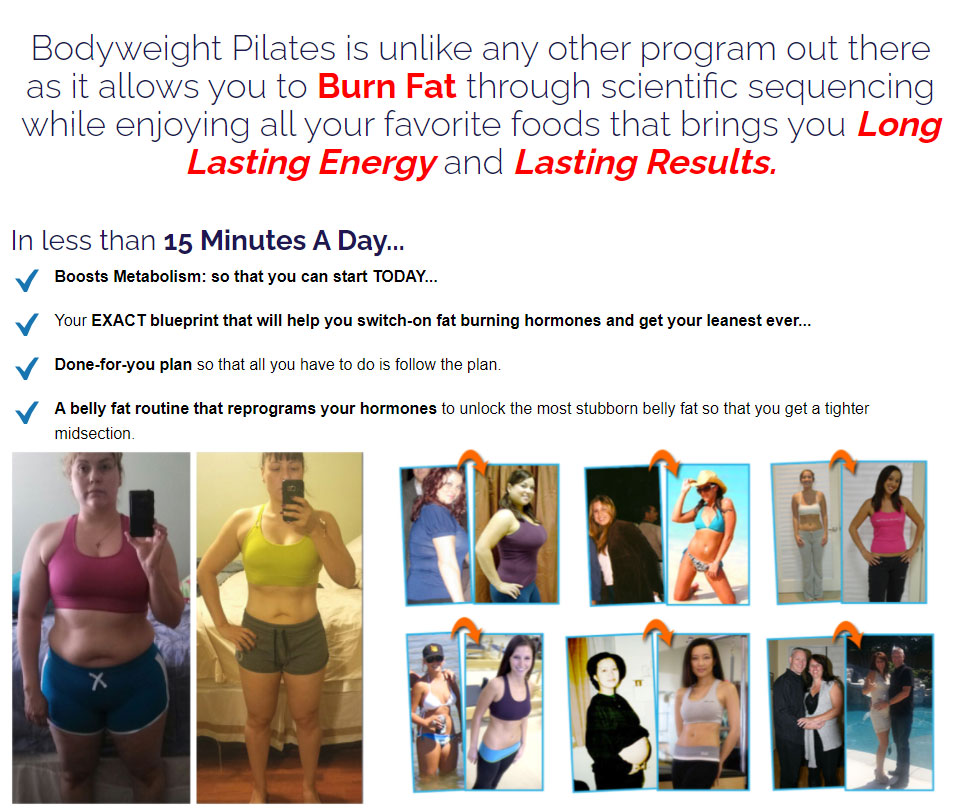Pilates
Pilates is a gymnastics invented by Joseph Pilates in the last century. This man with fragile health and a passion for anatomy worked all his life to design exercises to improve and optimize the body's functions. His training aims to make the body "strong as a Greek spine and supple as a cat".
JOSEPH PILATES
Joseph Hubertus Pilates, born December 9, 1883 in Mönchengladbach, Germany and died October 9, 1967 in New York City, is the inventor of the fitness method of the same name, Pilates...
Born in 1883 in Germany, Joseph Pilates suffered from a malformation of the thorax. He fought against his ailment until he became an accomplished sportsman in skiing, diving, yoga, boxing, gymnastics. With the strength of his experience, he installed springs above the beds of a hospital to allow patients to rehabilitate themselves while lying down. This is the origin of the machine now called Cadillac. Emigrated to New York in 1923, he opened his studio to train and re-educate professional dancers. He invented exercises and designed equipment to correct bad postures and develop the body in harmony, which became known as the Pilates method.
The second goal is to improve awareness of one's body, its strength and limitations, and to use it better. Joseph Pilates had emphasized the importance of harmony between body and mind, which is why he called his gymnastics Contrology (and not Pilates!!).
Regular practice of the exercises also helps to relax the motor muscles that need it, massage the internal organs and promote blood circulation. Intestinal transit and digestion are improved, sleep is more regular... The benefits of Pilates are multiple!
Biography
Joseph Humbertus Pilates, the inventor of the Pilates method, was born to a father (Friedrich) a top gymnast and a mother (Hahn) a naturopathic doctor, a precursor of natural and "alternative" forms of healing.
Joseph Pilates is a sickly child, suffering from rickets, asthma, and rheumatic fever. In order to regain his health, he began studying anatomy and observing animals in the woods. "Take a horse," he says one day while discussing fitness. " If someone wants to race it, he trains it to be in the best shape possible. Why not also keep humans in the best possible shape? "
He soon realized that mental and physical health were connected, and studied very exotic disciplines such as yoga and various martial arts. He integrates these practices with western body activities such as gymnastics or boxing, also incorporating ancient Greek and Roman forms of physical exercise. He is convinced that a "modern" lifestyle (bad posture, incorrect breathing, exercises that ignore postural muscles...) is a determining factor in poor health.
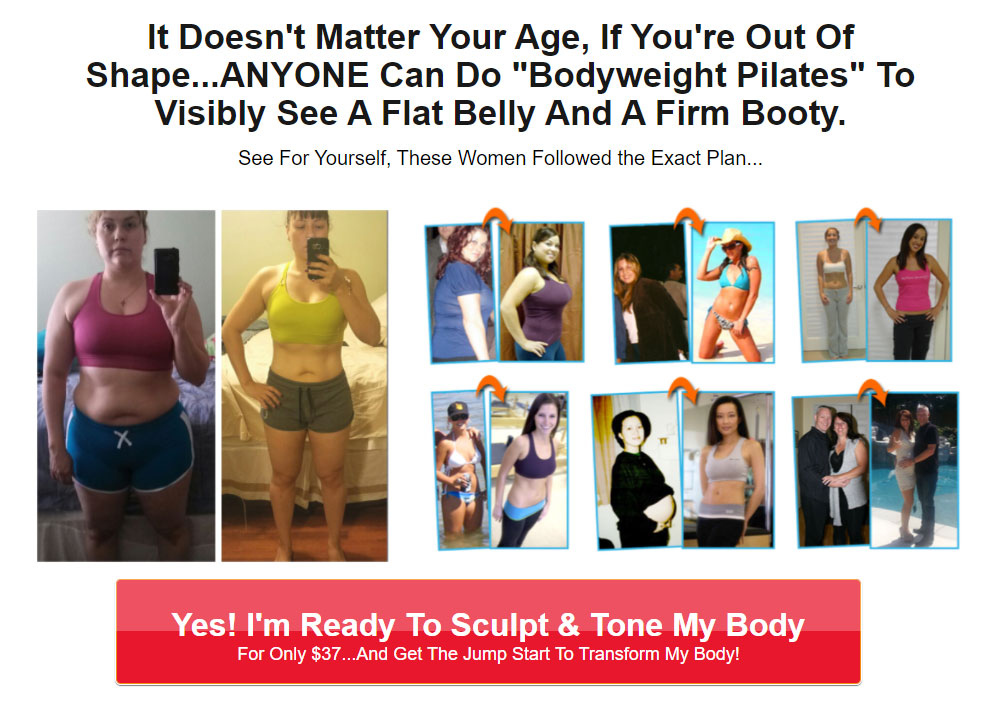
Why do Pilates?
Powerhouse - a term chosen by Joseph Pilates - which is translated as center. These are the deep muscles responsible for posture and are located between the ribs and the pelvis, all around the spine (abdominal, pelvic floor and back muscles). They are the energy center of the body, providing strength and stability.
Body Awareness: Becoming aware of one's strength, agility, and limitations in order to train them better... Joseph Pilates emphasized the importance of harmony between body and mind, which is why he called his gymnastics Contrology (and not Pilates!!), which is physical work under the "control" of the mind.
Strength and Mobility: The Pilates method allows you to gain strength, especially by training the deep muscles that support the spine. But Pilates also allows the harmonious development of the peripheral parts of the body. Likewise, mobility is increased by the constant search to improve the body's functions within the possible ranges.
Desirable effects: The deep work associated with breathing helps massage the internal organs, promoting respiratory function and blood circulation. Intestinal transit and digestion are improved, sleep is more regular... The benefits of Pilates are multiple!
How is Pilates practiced?
Individual or Collective: There are different ways to practice Pilates today. While some will prefer the quiet of an individual session in a specialized studio, others will be more attracted to group classes.
On Mat or Machines: Pilates gymnastics is practiced on mats, hence the name Matwork, or on machines. The latter are not very well known in France, but widely used throughout the world. There are four machines created by Jospeh Pilates: the Reformer, the Cadillac (or Table Trapeze), the Flesh, the Barrel (or Spine Corrector).
What to expect: Sessions are based on a sequence of exercises that are rhythmed by the breath. Initially the movements will be slow and precise, so that the principles of placement and movement are well understood by the person. As you begin to get used to feeling and positioning your body correctly, strength develops and movements become faster and more fluid.
The Exercises: The exercises are not acrobatic, as you can often hear or imagine. Pilates has evolved in its form, and the majority of the exercises can be modified to be accessible to beginners.
Exercises on equipment are particularly useful for people in rehabilitation, or simply for those who would find it difficult to work on mats. They are also an excellent tool to facilitate the acquisition of sensations, and to work against resistance to increase the difficulty of the work.
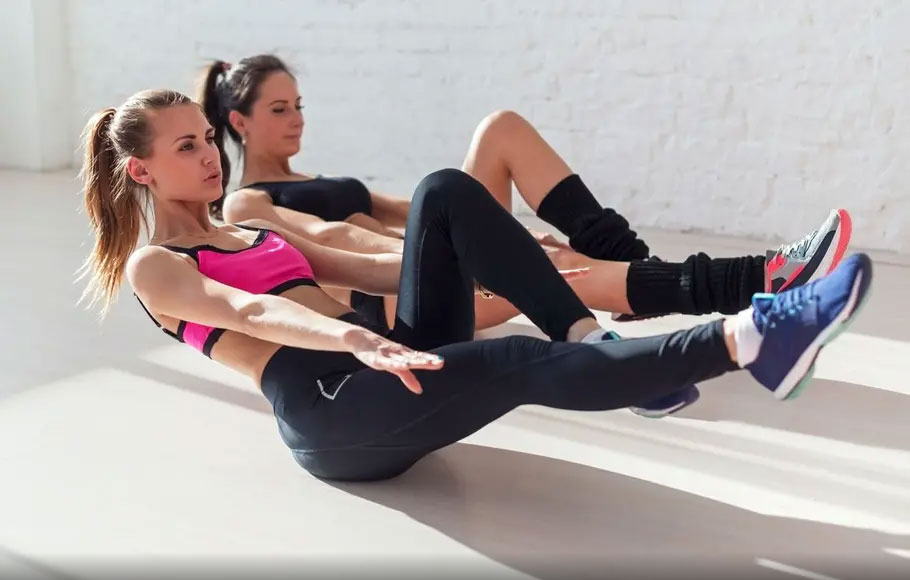
Where to practice Pilates?
In a Pilates Studio or Gym/Yoga Room
Pilates exists in different forms. The best way to get started is to learn the method from certified professionals. Currently, there are centers that only offer Matwork (mat) classes in small groups (maximum 15 people); and Pilates centers called Studios, which also offer individualized classes on mats and machines.
You can also find Matwork classes in some fitness clubs. Prices are often attractive but the number of participants can quickly become a problem. Choose the ones where the number of participants is limited, because the instructor must be able to come and correct you if you don't do an exercise well.
Doing Pilates at home
You can also take classes at home. But in all cases, make sure that the person giving you the class is Pilates certified.
With practice, you will quickly integrate the principles and will also be able to perform your exercises independently. There are many DVDs on the market as well as a few videos online.
Who can do Pilates?
Pilates is for everyone, and for all ages. Whether you are male or female, sporty or not, flexible or not, this method will always adapt to you. The exercises can be adapted according to each person's level, postures and needs. If you have conditions that require progressive physical activity, Pilates can help you. But always make sure you get the green light from your doctor first. It may be necessary for you to go through a few individual sessions in order to master the basics and know your limits before joining a group class.
The effects of Pilates
Regular practice improves posture through deep strengthening: back tensions can disappear, the stomach becomes firmer, the body becomes strong and supple. People gain confidence. Athletes' movements become more effective because they are better controlled and the risk of injury or muscular imbalance decreases. For example, Cirque du Soleil acrobats include Pilates in their workouts.
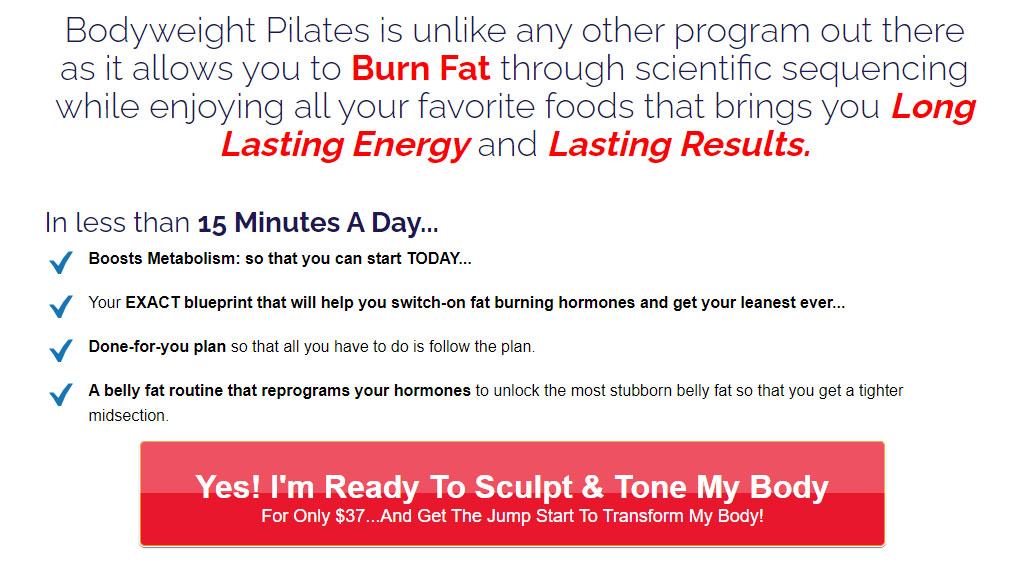
THE PRINCIPLES OF PILATES
Pilates exercises can only be effective if the principles of the method are scrupulously respected and applied. These principles are like the guiding principle to be respected.
It is therefore important to be familiar with them. Through repetition, they become automatic:
Breathing
In Pilates, you have to constantly tuck in your stomach and contract the pelvic floor muscles (especially the perineum and sphincter muscles). You no longer breathe in by inflating your stomach, but use lateral thoracic breathing. The air must be drawn in by inflating the ribs, on the sides and in the back. The air is expelled by tightening the ribs around the spine. This technique allows us to make better use of our lungs.
Concentration
When you do a Pilates session, you need to be focused on this. Turn off your cell phone, turn off the radio and close the doors! You must visualize your body during the movements and only think about the exercises. The mind must stay focused on how you move, it must not wander. You need to be aware of the movements and the sensations that they cause . This practice will then help you to find harmony between body and mind.
Centering
The center, baptized powerhouse by Joseph Pilates, is the most important concept of the method. It symbolizes the "core" of the body, and it is from it that everything starts. It is located around the waist, in an area that runs from the pelvis to the lower ribs. It is made up of the deep muscles that surround the spine, including the transverse and transverse spine, and all the pelvic floor muscles. A strong center improves posture; all movement is initiated and controlled by it. Through regular practice, you become aware of your center and strengthen it.
Control
You are an actor or actress of what you do, you must be aware of it and not "let it happen". Each exercise is an invitation to coordinate body movement with mind and breath. Take the time to move at your own pace, making sure that the center is active and focus on what you are doing...This will help you to be in control!
Precision
The Pilates method improves the alignment of your body. Through repetitions, your body "records" how you position yourself in space based on the exercises, using internal and external cues, which helps to refine your body schema. It is therefore necessary to look for maximum quality in the way you perform the exercises, conditioned by a small number of repetitions of each movement.
Fluidity
As you practice, you will be able to link the exercises one after the other, non-stop, like a choreography. They are performed in a well-defined order, with precise transitions between them. Practice to learn, recording the exercises as you go along, their names and how you move from one to the other.
PILATES AND YOUR HEALTH
While Pilates is widely prized for its ability to sculpt and refine the silhouette, some lesser-known effects have been the subject of scientific studies for several years. This method is now recognized to have positive effects in the treatment of certain pathologies, provided that the exercises are practiced correctly.
A method to relieve chronic pain, improve physical abilities
In individual sessions, the exercises can be selected according to the posture and physical condition of the person. Thus the work objectives are individual. Certified instructors are empowered to create programs that meet individual needs.
Physiotherapists are also experts in this field, and if they are trained in Pilates, they can add exercises to their therapy to optimize results.
In all cases, it is advisable to obtain your doctor's approval before beginning sessions.
Back pain: The method allows for the awareness and control of posture, but also the development of the muscles that support the spine. For this reason, the Pilates method has very good indications in the treatment of back pain, especially lumbar pain, which is very frequent in our society.
Scoliosis: Pilates exercises are aimed at adolescents, young adults and mature people with scoliosis. The deep work associated with the flexibility allows for encouraging results.
Rheumatism and Minor Trauma: With the help of selected exercises, one will be able to act on different parts of the body: neck, back, arms and shoulders, or legs. Please note that your condition may require the supervision of a health care professional, so consult your doctor or physiotherapist.
Pilates before/after childbirth or pre/post partum: This application of Pilates, less known in our country, is becoming more and more important. Some women do Pilates until almost the end of their pregnancy. After childbirth, Pilates will allow you to become aware of the perineum and to train it efficiently.
Pink" Pilates or adapted to women after breast cancer surgery: The exercises allow, among other things, to soften the thorax (and the scar) and to gradually regain strength and ease.
An improvement in the general state of health
Acting on the body as well as the mind, Pilates is also capable of improving the health of people who perform regular exercises, a skill that is more than obvious in men and women in their senior years.
Indeed, the latter are gradually recovering a true physical shape and with it a reinforced mobility and balance, which allows them to find against all odds a certain autonomy in their daily life, the method being able to act even on problems of urinary incontinence by working on the muscles concerned.
Pilates would also have the ability to act on organisms exhausted by a serious illness, such as cancer, for example, by improving the physical fitness of patients while effectively combating the symptoms of depression.
In short, Pilates is a physical activity that can target specific muscles while acting on overall health and the mind, and whose therapeutic applications are expected to multiply in the coming years.
These properties are now widely recognized, with many top athletes from all disciplines (dancers, ski champions, cyclists, tennis players, swimmers...) practicing Pilates exercises during their warm-up or to treat a troublesome injury by following the principle of rehabilitation.
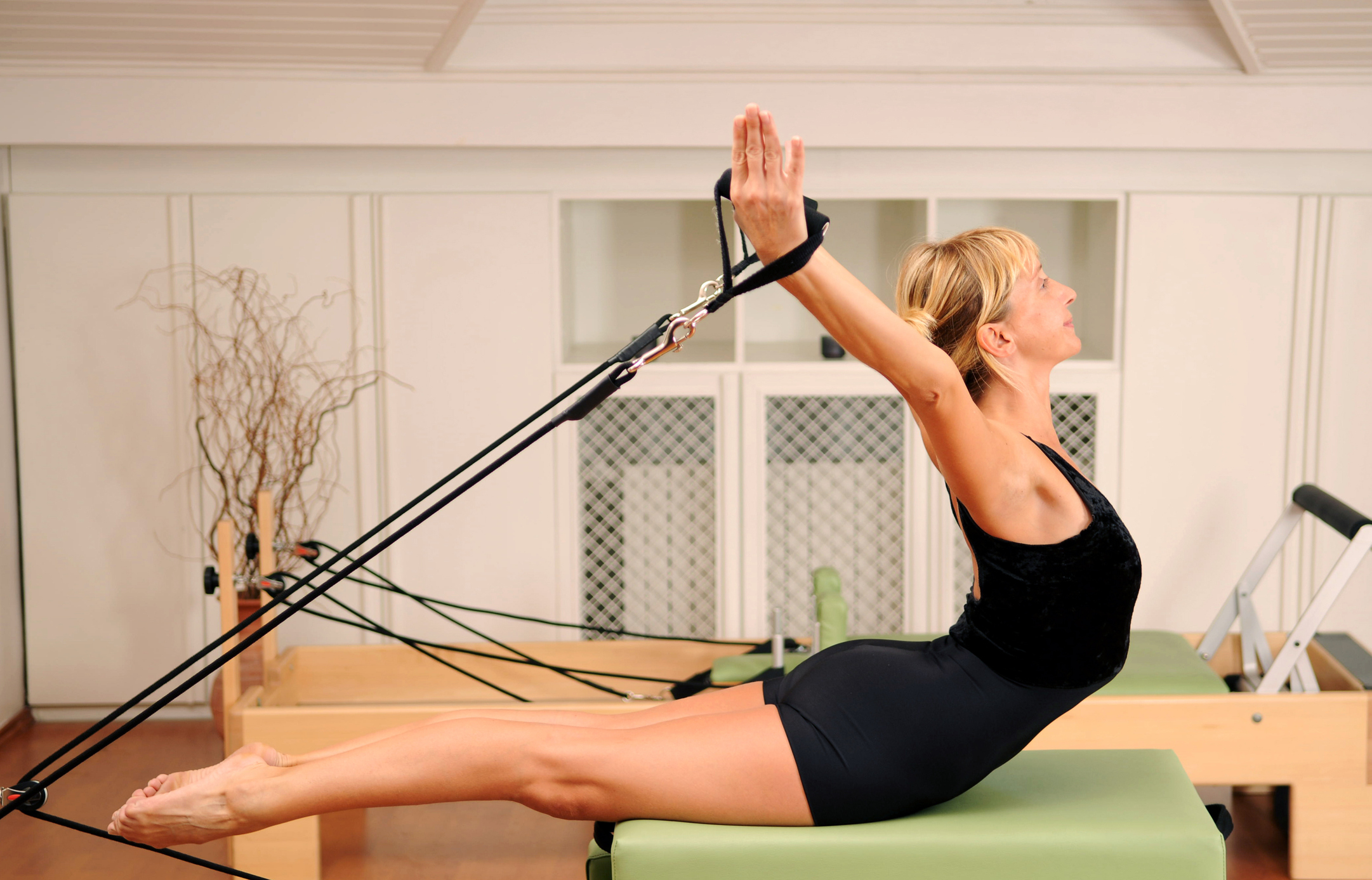
WHERE TO PRACTICE PILATES?
After reading and hearing over and over again how good Pilates was for body and mind, you decided to take the plunge. Between some who advocate club classes and others who swear by home exercises, it's hard to know which is the best way to start! Here's the bottom line.
Club courses: the ideal way to get off to a good start
As with any sporting activity, Pilates requires learning the precise postures to be performed from the start in order to avoid making mistakes. Club classes are therefore the ideal way to get off to a good start because the coach is there to guide you and to correct uncertain movements. There are group classes that generally accept no more than ten students and private classes with a coach just for yourself but which are necessarily more expensive than group sessions. Some centers have looked at the golden mean and thus offer classes with two to three people that guarantee a great deal of attention from the instructor, without breaking the bank!
Since Pilates has become more and more popular over the last few years, it is also taught in a variety of different settings, such as sports and fitness clubs, gym classes, sports associations, wellness centers (offering yoga, for example) and even in some dance clubs! You can ask your local town hall for more information, as small clubs do not necessarily have a website.
For those who don't have the time - or the desire - to go to a club or sports center, Pilates can finally be practiced at home with a private coach. You should be aware that this formula represents a significant cost.
Pilates alone at home: knowing how to choose the right supports
For reasons of budget, lack of time, shyness or geographical location (finding Pilates classes when you live more than an hour away from a city of 30,000 inhabitants is far from obvious), some women opt to practice Pilates alone at home, relying on DVDs, internet videos or illustrated books.
This method is quite appropriate as long as you are careful with the tools you choose: don't buy a book on a whim, without consulting expert advice on the internet, just as you need to find out about the seriousness of a DVD or website before you start.
And the same goes for the equipment, namely the floor mat and the ball, which you should choose by finding out about the most appropriate products. This way, you will be able to discover and practice Pilates in the best conditions! However, all sports coaches advise you to always start with about ten hours of classes with a professional before doing your exercises alone at home: the results will be all the more satisfying!
